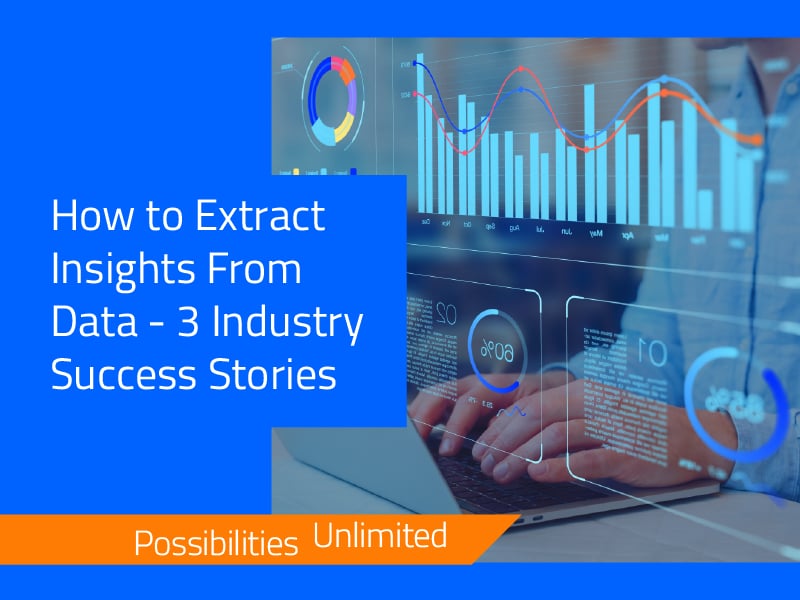Home > XtractEdge > Blogs > How to harness the Value of Procurement Insights
How to harness the Value of Procurement Insights

Build your procurement analytics “Muscle”
Business is increasingly motivated by information. Data has become a significant driver of strategy and the main driver of performance reviews in many leading companies. By applying analytics to the millions of data points, these leaders are equipped to make better business decisions through intelligent augmentation and more quickly through intelligent automation. As a result, they’re increasing cost savings, decreasing operating costs, and reducing risk— something all businesses are keen to do.
However, exception to this are procurement organizations that really profit from analytics. In order to run the company effectively, most enterprises still struggle to implement more mature analytics capacities. Our first blog post on ‘Roadblocks towards Effective Procurement Analytics’ displays the challenges faced in various aspects. Many organizations are just starting the analytics journey— which typically begins with descriptive analytics and advances through diagnostic, predictive, and lastly cognitive analytics. Most of the problems facing the current procurement analytics solution fall under two primary classifications to improve actionable ideas; namely: organizational readiness, quality of data, team ability, and deficiencies in technology.
High-performing organizations recognize that procurement health plays an important role in business growth and profitability. Analytics becomes more advanced and harder to conduct with each step of the trip. But the value-added payoff is proportionate with the complexity rise.
Perspective towards Procurement Analytics
Big Value in Big Data
Big data improves spend visibility for procurement teams, helping them handle cost savings and vendor performance risk. This is made possible with the five separate procurement performance parameters that can deliver excellent value:
Once there is clarity in the strategy to deliver value, procurement functions require analytics solutions and support that provide three key features:
Additionally, Flexibility is an important trait of the solution, as is the potential of delivering procurement analytics as a service. Let’s understand these perspectives in detail.
Solution Perspective #1 – Strategic Capability
Need for Definition of Roles
CPOs and procurement teams are often unable to articulate a clear vision efficiently. Supply chain and procurement teams are becoming more engaged in decision-making at the executive level, moving from a mindset of cost reduction to being recognized as a strategic aspect of company activities.
In order to obviously target value drivers and produce insights that contribute to company goals, insights need to be collected and presented to individual roles or individuals. In this way, suitable roles in the procurement function can contribute to the goals of their organization. Therefore, separate dashboards for the CPO, Category Manager, Procurement Operations Manager, Project Manager, each showing perspective appropriate to their users, allow them to act according to their positions.
A procurement analytics solution needs subject matter expert to assist these persona-based insights, who can participate with organizations to allow them to identify the correct role-based questions and analytical insights to deliver value. Senior procurement specialists who have the analytical and domain knowledge to identify actionable ideas frequently provide this capacity.
Solution Perspective #2 – Analytical Capability
Upskill your Team
Supply chain and procurement departments need to reassess their skill sets to become more agile and data driven. Procurement teams are not inherently data scientists who can capture patterns intuitively, mine and discover them. This implies that CPOs need to promote a more data-centered cultural shift within the team, using real-time insights to accelerate better business decisions.
To extract value from procurement information, the significance of analytical talent is essential. This implies that CPOs require access to individuals who can set up information workflows and modeling methods to guarantee extensive insights, provided by analytics. Two main roles in the development of analytical capacity in the tactical acquisition are that of:
In order to consistently offer extra value, new data sources need to be pulled in and integrated with current information. Converging data sources with other organizational sources (e.g. operational / maintenance, HR) enables procurement tasks to obtain value from interactions and trends.
Solution Perspective #3 – Technological Capability
Transform with Actionable Insights
By harnessing the strength of big data, businesses have higher possibilities to predict market trends, spend, consumer behavior and real-time supply chain needs. By mixing historical data with customer insight, a CPO can move away from making reactive fiscal information choices and instead adopt an insight-led forward-looking strategy.
To prevent being overwhelmed by information overload, procurement teams turn to automated solutions as a manner to redirect their focus to unveiling company strategic insight.
Modular in Nature
Cloud-based solutions and current IT infrastructures need to be integrated seamlessly to drive company efficiency, agility, and visibility, and to regulate corporate spending and supplier management. The best solutions for modern and future analytics will be modular and over the top solutions, allowing organizations to incorporate quickly evolving best-of-breed technologies while keeping internal legacy/procurement systems untouched.
Role-Based
The value chain of procurement analytics possesses several features: cleaning, classification, evaluation, and visualization. To make the most of the holistic analytical method, each of these functionalities should be backed by their corresponding best-matched technology.
To meet the needs and objectives of stakeholders, the visualization or dashboarding of procurement analytics insights should be flexible.
Rise of AI & Machine Learning
There are majorly three evolving developments in technology that are likely to affect procurement organizations: The Internet of Things (IoT), predictive analytics, and social sourcing. Over the previous few years, smart technologies, particularly machine learning have made significant progress. As computers are learning to create increasingly better data-driven choices based on historical data patterns, the insights they provide are increasing in value.
Although this technology is not new to spend analytics, supply chain and procurement teams still need to make full use of the projected insights from data patterns, such as spend Insights converged with risk or operational insights. Machine learning technology has an important role to play in procurement analytics due to the sheer data quantity, disparate sources, and the need to recognize data patterns to derive value from converged data sets.
Overarching Needs of Procurement Analytics Solution
Flexibility – The ultimate requirement in Procurement Analytics
Besides the main components of the analytic solutions of the next generation described above, the platform’s thematic requirement is its flexibility to develop and mature with an organization. It must sufficiently be flexible enough to:
Human Insight – Mind trumps over Matter when it comes to Service
Even the latest enhancement of artificial intelligence cannot replace human understanding, at least some degree of which is critical to ensure the accuracy of base data, validating ideas and guiding the evolution of the analytics platform from its inception to maturity. Given the challenge of retaining analysts with distinctive abilities to deliver coherent insights into procurement, the next-generation procurement analytics solutions should also offer optional analytics as a service to guarantee that organizations continuously harness the complete value of the technology. This will be critical for long-term achievement, so one needs to be sure their enterprise is ready.
The Future
The next-generation procurement analytics solutions should also offer optional analytics as a service to guarantee that organizations continue to harness complete authority of the technology. Companies will want their procurement effectiveness to keep pace with their competitors with many processes fit for automation. This will be critical for long-term achievement, so it is important to ensure the enterprise is ready.


Procurement Insights Team
More blogs from Procurement Insights Team >